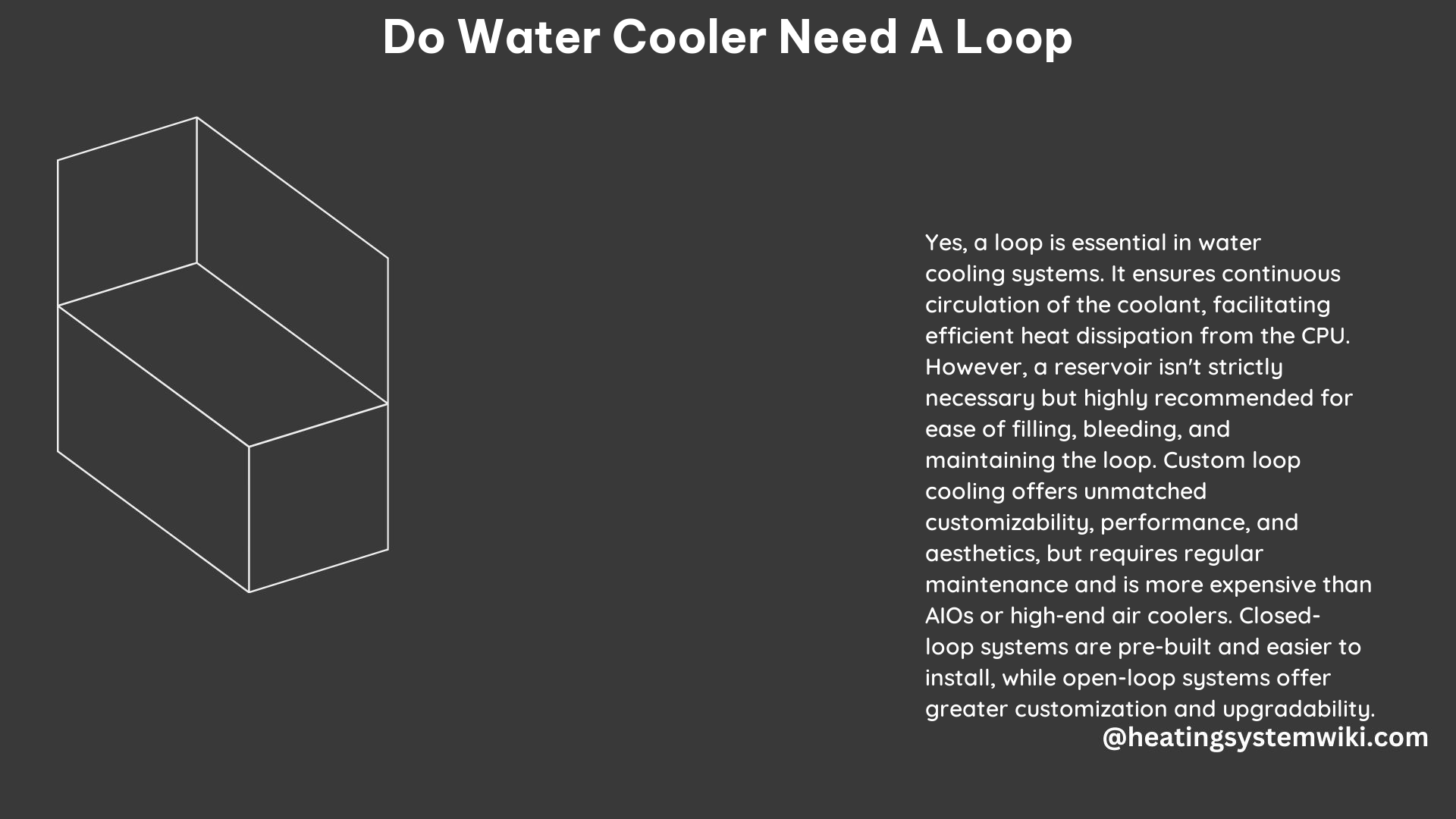A water cooling system for a computer requires a loop to function effectively. The loop is a continuous circulation of the cooling liquid, which is crucial for efficient heat dissipation. The loop typically consists of a water block that cools the CPU, a radiator that dissipates the heat, a pump that circulates the liquid, and tubing that connects these components.
The Importance of a Loop in Water Cooling Systems
- Continuous Circulation: The loop ensures that the cooling liquid continuously circulates through the system, carrying heat away from the CPU and other components.
- Efficient Heat Dissipation: The loop allows the heat generated by the CPU and other components to be efficiently dissipated through the radiator, preventing overheating and ensuring optimal system performance.
- Consistent Cooling: The loop maintains a consistent cooling environment, preventing hot spots and ensuring that the entire system is evenly cooled.
- Scalability: The loop can be expanded to accommodate additional components, such as a GPU or other high-heat-generating parts, allowing for a more comprehensive cooling solution.
Components of a Water Cooling Loop

- Water Block: The water block is the component that directly contacts the CPU, providing a path for the cooling liquid to absorb the heat generated by the processor.
- Material: Typically made of copper or aluminum, which have high thermal conductivity.
- Design: The water block’s design can vary, with some featuring intricate channels or micro-fins to maximize heat transfer.
-
Compatibility: Water blocks are designed to fit specific CPU sockets and models, ensuring a secure and efficient connection.
-
Radiator: The radiator is responsible for dissipating the heat absorbed by the cooling liquid.
- Size: Radiators come in various sizes, with larger radiators generally providing better cooling performance.
- Fan Configuration: Radiators are often paired with fans that help to dissipate the heat more effectively.
-
Material: Radiators are typically made of aluminum or copper, with copper offering better thermal performance but at a higher cost.
-
Pump: The pump is the component that circulates the cooling liquid through the loop.
- Flow Rate: The pump’s flow rate, measured in liters per minute (LPM), determines the speed at which the liquid moves through the loop.
- Power Consumption: Pumps can vary in power consumption, with higher-end models typically consuming more power but providing better performance.
-
Compatibility: Pumps must be compatible with the other components in the loop, such as the tubing and water block.
-
Tubing: The tubing connects the various components of the water cooling loop.
- Material: Tubing is typically made of flexible, transparent plastic, such as PVC or PETG, or rigid materials like acrylic or copper.
- Diameter: The tubing diameter, usually measured in 1/4″ or 3/8″, affects the flow rate and overall system performance.
-
Compatibility: The tubing must be compatible with the fittings and other components in the loop.
-
Reservoir (Optional): While not strictly necessary, a reservoir can make the filling and bleeding of the loop easier.
- Capacity: Reservoirs come in various sizes, with larger capacities providing more room for coolant and air bubbles.
- Design: Reservoirs can have different designs, such as cylindrical or cube-shaped, to fit various system configurations.
- Compatibility: Reservoirs must be compatible with the other components in the loop, including the tubing and fittings.
Customizing the Water Cooling Loop
- Tight Constraints: In cases where space is limited, a pump and reservoir combo can be a space-saving solution, eliminating the need for a separate reservoir.
- Component Cooling: The size of the loop and the number of components cooled can affect the loop’s efficiency. Cooling a GPU in addition to the CPU may require a larger loop and more powerful components.
- System Requirements: For systems primarily doing CPU-bound tasks like rendering and virtualization, a smaller loop may be sufficient, while more demanding workloads may require a larger and more robust cooling solution.
Conclusion
In summary, a water cooling system for a computer does need a loop for efficient heat dissipation. The loop typically consists of a water block, radiator, pump, and tubing, with an optional reservoir to make the filling and bleeding of the loop easier. The design and components of the loop can be customized to fit specific needs and constraints, such as tight spaces or the number of components being cooled.
Reference:
– Is a reservoir actually necessary in a liquid cooling setup?
– Do you need a reservoir for computer liquid cooling?
– Closed Loop vs Open Loop Water Cooling
